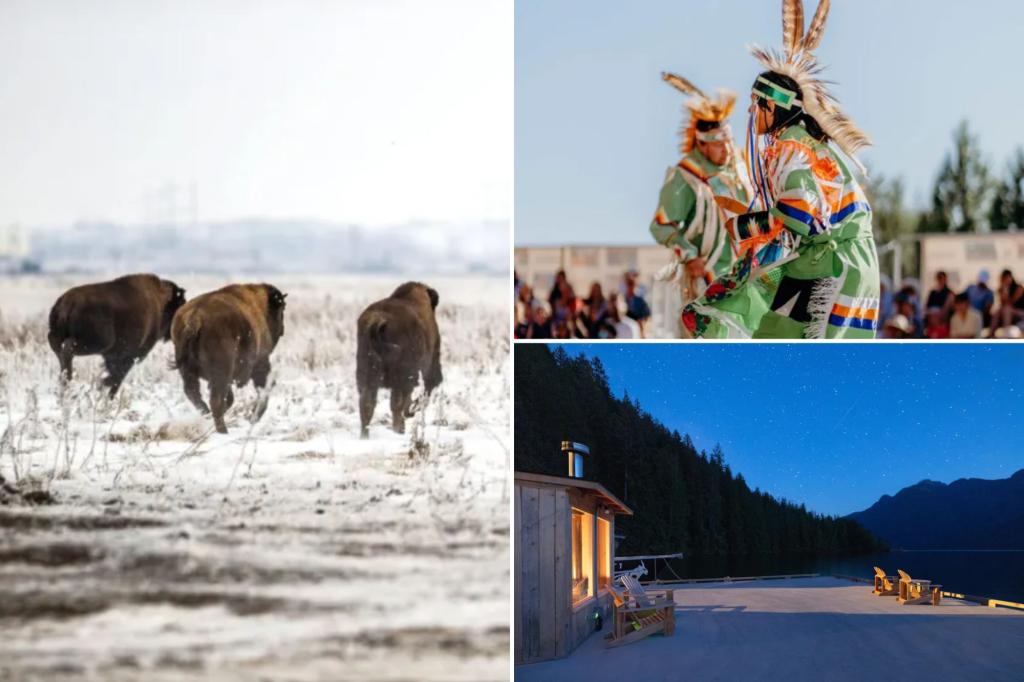There are nearly 650 First Nation communities across Canada, each with their own unique indigenous history and traditions. Many of these communities are eager to share their ways of life with travelers, whether through visiting traditional heritage sites or indulging in indigenous-based restaurants and culinary experiences. These communities are a crucial component of Canada’s history that is sometimes overlooked. Recognizing the significance of First Nation traditions, the Canadian government recently launched a multimillion-dollar Indigenous Tourism Fund to promote and support nearly 150 tourism projects nationwide.
For those looking for a more formal indigenous experience, Quebec’s Onhoüa Chetek8e site near Quebec City offers a reconstructed village showcasing the daily life of the Huron-Wendat people before the arrival of Europeans in the 16th century. Similarly, Wanuskewin Heritage Park in Saskatchewan provides travelers with the opportunity to explore Canada’s oldest archaeological dig, complete with ancient medicine wheels, petroglyphs, hiking trails, and camping in tepees. Both sites offer a compelling experience without resorting to kitsch or cliche.
In Manitoba, particularly in Winnipeg, indigenous culture can be most prominently felt through the food. Feast Cafe Bistro serves indigenous-focused food while also supporting the local community by hiring staff from the Peguis First Nation and training them in the culinary arts. The menu features dishes made with traditional ingredients like bison, berries, nuts, squash, and corn, incorporated into familiar favorites like pizzas, tacos, burgers, and poutine. This approach allows visitors to taste and experience the rich indigenous culinary heritage of the region.
In British Columbia, the Klahoose Wilderness Resort in Desolation Sound offers an upscale experience of Canada’s traditional way of life while immersing guests in the culture of the indigenous Klahoose people. Set on their land, the resort provides a mix of rustic lodges and cabins adorned with traditional artwork and crafts. Guests can participate in cultural activities led by tribal leaders, make handicrafts, explore the surrounding forest where grizzly bears hunt for salmon, and enjoy the pristine wildlife and natural surroundings in the area. Packages start at $2,131 per person for three days, all-inclusive.
Calgary’s Calgary Stampede, held each summer, offers a unique opportunity to experience Indigenous culture right in the city center. In addition to the Western-styled rodeo for which the stampede is known, the event features the Elbow River Camp where visitors can immerse themselves in the culture and traditions of the Kainai, Piikani, Siksika, Stoney Nakoda, and Tsuut’ina First Nations. Spread out in tepees, locals offer crafts, foods, jewelry, and demonstrations of indigenous ceremonies. One must-try item is bannock, a local Indigenous quick bread that has been a staple for generations of First Nation members. This blend of Western and Indigenous cultures at the Calgary Stampede showcases the richness and diversity of Canada’s indigenous heritage.















